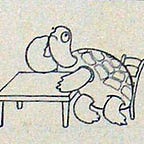204. Today in 1920s Turkey: 8 September 1928 (Famous Person Édouard Manet)
English
Famous People: Édouard Manet: A French painter who was born in 1832 and died in 1883, he rendered natural landscapes in particular. They are the most beautiful specimens of the Impressionism style of artworks.
Comments:
This short snippet brings several subjects to mind. The content of the blurb is a textual visual presentation of the renowned French painter, Manet, framed as a “Famous” person. Fame in the modern sense of the word is inextricably linked to the press and mass media, gaining traction with the advent of photography, easily reproduceable images, and finally, an ever-efficient method of distribution. The press thus created the genre of celebrity persons, which it continues to peddle to this day. In the 1920s all categories of important persons could be labeled as famous or given special treatment.
Cumhuriyet ran these kinds of snippets as part of a “Famous Persons” column, which appeared in multiple installments. Although framed as famous, the purpose of introducing this person, and others like Charles Dickens, was no doubt meant to familiarize the readership with admirable or accomplished figures for the purpose of worldly edification. Illustrated gazettes like Resimli Gazete also ran a similarly high-minded serial called, “Her Hafta Bir Tercüme-yi Hal” or “One Biography Every Week,” introducing Great Men of world history and culture to their readers in much more extensive, full-page or multi-page articles, one example being about the famous Ottoman painter Osman Hamdi Bey.
Other personages identifiable as celebrities and stars can likewise be found in the pages of newspapers from this era. Cartoons using film actors Charlie Chaplin and Harold Lloyd have been covered by Today in 1920s Turkey as well as child actor, Jackie Coogan’s signed photographic cover of the weekly illustrated digest, Haftlık Mecmua. Similarly, local characters such as Pazarola Hasan Bey and Zaro Aga were also occasionally featured in the papers, creating a certain familiarity with their lives and routines among regular consumers of the Istanbul-based popular press.
Finally, the use of Latin letters or the “New” Turkish alphabet is also noteworthy. Most Today in 1920s Turkey posts cover texts in Ottoman Turkish using the Arabic script, however the present example also functions as “preparatory” reading materials generated by the press in the months, weeks, and days leading up to alphabet reform, which took effect on 1 December 1928. Other more instructional content was also published by Cumhuriyet, including this twelfth installment of the column, “Benim Alfabem” published a week after today’s issue. This brand of reading material, along with the “Famous People” column from today is pedagogical in nature and meant to instruct and inform, especially in the area of learning the new alphabet, which required mass mobilization toward literacy efforts to make a swift and seamless transition from one system of writing to another.
